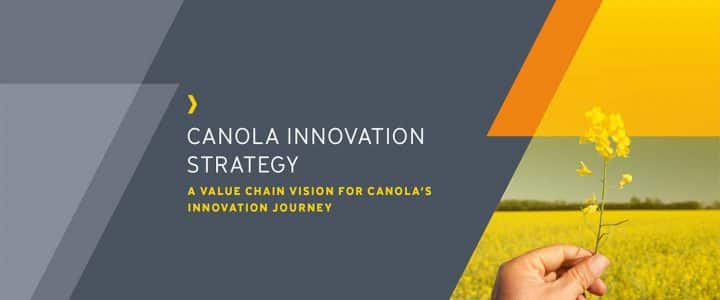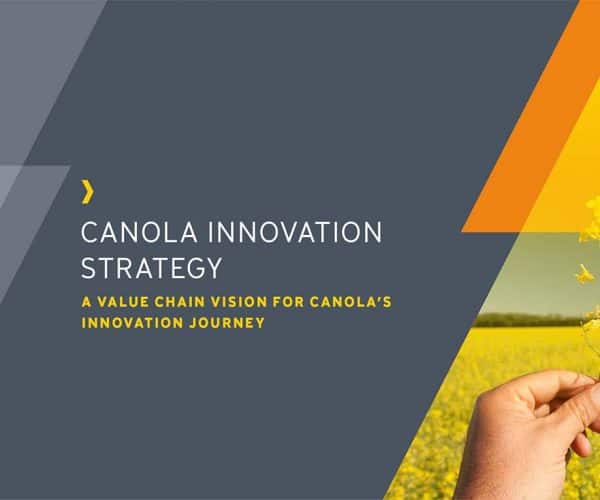Investment in research and innovation has driven canola to become one of the world’s most important oilseeds and Canada’s most valuable crop. Canola is poised to do even more for our economy and our environment, as long as we harness the opportunities available and are open to and guided by innovation.
The Canola Innovation Strategy, developed through 28 in-depth consultations with major stakeholders, provides an aligned value chain vision, from farm to customer, for the innovations needed to keep getting better. It outlines objectives for canola performance, precision, protection and products, and calls for a predictable and science-based regulatory system.
Through the long-term vision of this strategy, growers, government, universities and private researchers can collaborate to increase the chances for success. Communication with growers, government agencies, private companies and other stakeholders is essential to a successful roll out of this strategy and long-term application of its objectives.
Four pillars of the Canola Innovation Strategy
THE NEED:
Increase productivity and meet current and future customer needs for oil and protein. Meanwhile, remain a top crop for Canadian producers, sequester more carbon in the soil, reduce greenhouse gas emissions and contribute to biodiversity.
FOCUS ON:
• More yield per acre
• Improved nutrient use efficiency
• Soil health
• Resilience to drought, heat and excess moisture
• Genetic solutions for yield and climate adaptability
• Innovative ways to communicate best practices
THE NEED:
Use current and new field tools and technologies to increase productivity and reduce the environmental footprint of canola.
FOCUS ON:
- Rapid and vigorous crop establishment
- Precision tools to increase yield and efficiency from each input
- A model for on-farm testing of new management practices and products
- Economic analysis on all publicly funded canola projects
THE NEED:
Protect the crop from pests and other threats to productivity, including climate change factors, while also protecting markets.
FOCUS ON:
- Genetics for stress tolerance (including drought, heat and excess moisture) and resistance to pests
- Biologicals for pest management
- Biodiversity within the canola crop, including beneficial insects, and appreciation for non-farmed spaces
- Performance indicators for all products to help growers make the best decisions
- Integrated management, including effective crop rotation, to protect traits and manage pest resistance
THE NEED:
Ensure Canada’s canola industry can supply current customers while also being flexible to adapt to changing market demands for oil, meal, protein and fuel.
FOCUS ON:
- Maximum oil content
- Processing technologies and methods to improve efficiency and maintain food and feed safety
- A consortium to coordinate interests related to canola protein
- A review of the canola definition, including rules for output traits that may be outside the primary definition
These four pillars represent the foundation of our 2023-2028 Canola AgriScience Research Cluster.
Regulatory Needs
The innovation strategy also depends on a predictable and science-based regulatory system. Needs include:
- Regulations that support innovation. This includes a science- and risk-based, harmonized regulatory system for plant breeding and genetics tools, including gene editing and RNA interference (RNAi) technology.
- Harmonized global seed trait regulations, especially for low-level presence. This will limit trade impediments and increase seed industry investments.
- Harmonized global pesticide regulations for new product registrations and review of older products.
- Intellectual property policy with good patent protection so seed developers are incentivized to create value.
- Transparent and predictable variety registration.
- Market access for traits. An industry approach to responsible trait commercialization will help to ensure market access for canola.
- A pathway for alternative products. Canada needs a transparent and science-based regulatory system for new technology like RNAi and other alternative products.
To learn more, read the full report or summary on the four pillars of the Canola Innovation Strategy.







